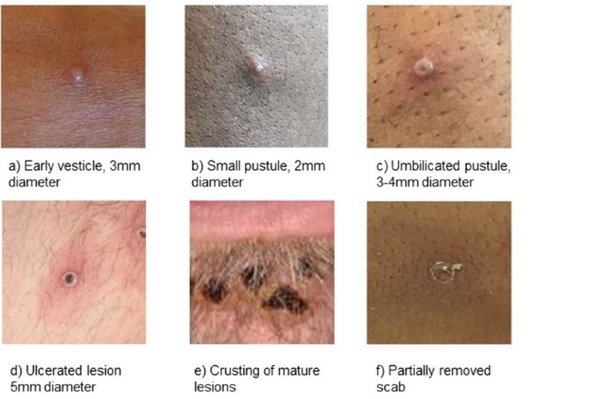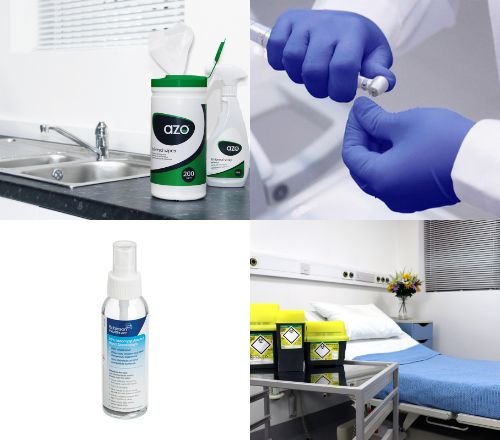
Mpox: Keeping you updated with the latest developments | Vernacare

Mpox: Keeping you updated with the latest developments | Vernacare

The World Health Organisation has reported that Mpox cases (previously known as Monkeypox) have risen 77% in the latest weekly count, bringing the total to more than 6000 cases.
With the United Nations agency due to reconvene a meeting of the committee that will advise on the declaring the outbreak a global health emergency, the WHO's highest level of alert, we want to make sure you have the key essential information about the monkeypox virus.
How widespread is the Mpox outbreak?
On the 7th July 2022, The World Health Organisation reported a 77% increase in the number of lab-confirmed mpox cases. There are now over 6000 confirmed mpox cases, and three deaths have been reported from 59 countries/territories in five WHO regions.¹
As of Monday 11th July, there are 1,735 confirmed cases of mpox in the UK.
What is Mpox?
Mpox is a rare disease caused by infection with the monkeypox virus. "The symptoms of monkeypox typically begin with fever, headache, muscle aches, backache, swollen lymph nodes, chills, and exhaustion within 1 to 3 days (sometimes longer). After the appearance of the fever, the infected patient develops a rash, often beginning on the face and then spreading to other parts of the body. The incubation period (time from infection to symptoms) for mpox is usually 7 - 14 days but can range from 5 - 21 days."²
The illness typically lasts 2 to 4 weeks and an individual is contagious until all the scabs have fallen off and there is intact skin underneath. The scabs may also contain infectious virus material and will need to be handled with caution.

How does it spread?
Mpox spreads in different ways. The virus can spread from person-to-person through:
- direct contact with infectious rash, scabs, or bodily fluids
- respiratory secretions during prolonged face-to-face contact, or during intimate physical contact such as kissing, cuddling, or sex
- touching items (such as clothing or linens) that previously touched the infectious rash or body fluids
- pregnant people can spread the virus to their foetus through the placenta
- It's also possible for people to get Mpox from infected animals, either by being scratched or bitten by the animal or by preparing or eating meal or using products from an infected animal.³
How can we prevent the spread of the Mpox virus?
According to the WHO, implementation of appropriate infection prevent and control (IPC) measures, for example adequate screening space, ventilation, hand hygiene, use of personal protective equipment (PPE), environmental cleaning and disinfection, and training of health workers, is essential to mitigate and control transmission of monkeypox in healthcare and community settings. Do not touch the rash or scabs of a person with Mpox, do not share eating utensils or cups, wash hands often with soap and water or use an alcohol-based sanitiser, especially after contact with infected people.
Health workers should apply standard precautions and perform a risk assessment to evaluate the need to use tranmission-based precautions. Standard precautions include hand hygiene, respiratory hygiene and cough etiquette, patient placement, PPE, aseptic technique, safe injections and sharps injury prevention, environmental cleaning and disinfection, proper handling of laundry and linen, decontamination and reprocessing of reusable patient care items and equipment, and waste management, should be used for all patients at all times.¹
WHO advises that transmission-based precautions be implemented for any suspected or confirmed case of Mpox in healthcare settings, including the use of respirators by health workers, as described in the clinical management and infection prevention and control for Mypox: Interim rapid response guidance, 10th June.
What are the treatment options available?
Mpox symptoms often resolve on their own without the need for treatment. It is important to take care of the rash by letting it dry if possible or covering with a moist dressing to protect the area if needed. Avoid touching any sores in the mouth or eyes. Mouth rinse and eye drops can be used as long as cortison-containing products are avoided. Vaccinia immune globulin (VIG) may be recommended for severe cases. An antiviral that was developed to treat smallpox (tecovirirmat, commercialised as TPOXX) was also approved for the treatment of Mpox in January 2022, for people who are more likely to get severely ill, such as patients with weekened immune systems.⁴
Get in touch with our team today to discuss our different ranges and how we can help you and your patients.
References
1. World Organisation - Multi-country outbreak of Monkeypox (2022) - https://cdn.who.int/media/docs/default-source/2021-dha-docs/20220706_monkeypox_external_sitrep_final.pdf?sfvrsn=1b580b3d_4&download=true
2. Melbec Microbiology - Monkeypox - What is it and how can the spread be minimised? - https://www.melbecmicrobiology.co.uk/2022/05/23/monkeypox-what-is-it-and-how-can-the-spread-be-minimised/
3. Centres for Disease Control and Prevention - How it spreads - https://www.cdc.gov/poxvirus/monkeypox/transmission.html
4. World Health Organisation - Monkeypox: Questions and Answers - https://www.who.int/vietnam/news/detail/20-05-2022-b-nh--u-m-a-kh----h-i-v---p
Image sourced from: https://www.gov.uk/guidance/monkeypox
